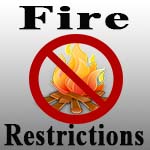Lessons to be learned from Fourmile Fire
- jf1acai
-
 Topic Author
Topic Author
- Mountain Legend
-

I highly recommend that all who live within the Wildland Urban Interface (WUI) read this report. It contains important information regarding the probability of such a fire occuring again; the efficacy of pre-fire treatment methods which had been employed, both by government and homeowners; fire behavior that can be expected; fire management activities which occured, and realistic expectations for the future; the causes of the home destruction which resulted; and social attitudes which contribute significantly to the home destruction.
Some significant items from the report summary are:
Fuel Treatments
o The treated areas were small and narrow. They ranged from 1 to 50 acres in size with only 4 units greater than 20 acres in size.
o No performance metrics were defined for the fuel treatments-that is, the environmental conditions in which the treatments were to be effective in modifying fire behavior were not defined.
o Thinning trees to a specified density (residual basal area) or spacing was the prescription often negotiated with land owners. In addition, the treatments were often focused on improving the health of the forest (removing diseased and malformed trees, i.e., dwarf mistletoe) rather than modifying fire behavior.
o High winds and low air humidity during the Fourmile Canyon Fire are common weather conditions associated with all large wildfires along the Front Range and, thus, should be accounted for in any fuel treatment prescription.
o Pervasive spotting observed during the Fourmile Canyon Fire easily breached the narrow fuel treatment units and rendered them of limited value to containment efforts.
o The abundance of grasses, forbs, shrubs, and often branches and twigs that could have been removed through judicious surface treatments (e.g., prescribed fire) occurring within the areas where the fuels had been treated contributed to the high fire intensities and fire spread rate observed.
o Post-fire satellite imagery clearly shows the absence of changes in stand condition inside treated areas compared to neighboring untreated stands. In some cases, treated stands appeared to burn more intensely than adjacent untreated stands, perhaps because of additional surface fuels present as a result of the thinning. One clear example of this comes from near Gold Hill where the piles of slash were scattered in the understory of a thinned stand but had not been burned.
o Claims of fuel treatment performance around homes by the owners are consistent with the knowledge that additional attention to surface fuel removal plays an important role in changing fire behavior. Evidence of these effects is seen in the generally green tree canopies occurring on their property.
o Treatment units were located adjacent to roads and ridges which confounds treatment effects with those related to topographic and/or vegetative changes.
Home destruction
o A total of 474 homes were located within and adjacent (~ < 100 feet) to the final wildfire perimeter.
o 168 or 35.4% of the homes within the burned area were destroyed by the Fourmile Canyon Fire. This is consistent with the percentage of homes destroyed in other wildland-urban interface (WUI) fire disasters.
o Within the Fourmile Canyon Fire§ 29 homes were ignited by crown fire
o The initial rapid fire growth and intense burning overwhelmed fire suppression and structure fire protection capabilities.
§ 139 were ignited by surface fire
§ 157 homes were destroyed within the first 12 hours
o The low housing density did not result in house-to-house fire spread; the slow rate of home fire involvement and burning compared to wildfire spread did not enhance overall wildfire behavior/intensities.
o 83% of home destruction was associated with surface fire and consistent with other WUI fire disasters. This indicates survival or loss of homes exposed to wildfire flames and firebrands (lofted burning embers) is not determined by the overall fire behavior or distance of firebrand lofting but rather, the condition of the Home Ignition Zone (HIZ) – the design, materials and maintenance of the home in relation to its immediate surroundings within 100 feet.
o We have the opportunity to significantly reduce the potential for WUI fire disasters during extreme burning conditions such as the Fourmile Canyon Fire, but this opportunity depends on homeowners creating and maintaining low home ignition potential within the HIZ.
o For a HIZ to be successful in preventing a home from burning is predicated on the home having ignition resistant materials and with the homeowner removing flammable debris from on and around the house and maintaining this condition. If flammable vegetation is not continuous (landscaping, driveway, etc.) to the home it is difficult for firebrand ignited spot fires to contact the home. Also if trees within about 100 ft are not continuous the potential for active crown fire is minimal and even if individual trees do torch, they present minimal radiant heating to the house.[/ul]
I believe the last point from the summary deserves more attention, so here is the relevant portion from the report:o Interestingly, 127 of the landowners evacuated during the Fourmile Canyon Fire were surveyed in 2007 regarding their perceptions of their wildfire risk and mitigations efforts.
§ Overall survey respondents were fairly familiar with wildfire, with 83% reporting being somewhat or very aware of wildfire risk.
§ Only 4% of the survey respondents reported not taking any actions to reduce their risks
§ A critical finding was that most landowners surveyed prior to the fire did not believe that characteristics of their home and immediate surroundings were significant factors influencing the likelihood of a wildfire damaging their property within the next five years. These perceptions are refuted in the scientific literature and the home ignition assessment within this report.
Social Attitudes
Numerous damaging wildfires have occurred in Colorado since 1976, several of which occurred along the Front Range. People have been killed and 100s of homes destroyed within the hundreds of thousands of acres burned (Table 5). These fires provide the context for the attitudes of the people living in and near where the Fourmile Canyon Fire burned. Post- fire surveys of residents were not administered due to time constraints associated with Federal survey approval requirements through the Office of Management and Budget. However, surveys had been conducted of WUI residents within Larimer and Boulder Counties in 2007 regarding wildfire risk perceptions and mitigations efforts. Of the respondents within the original survey 127 were within areas evacuated during the Fourmile Canyon Fire. The evacuees’ perceptions of wildfire risk and what specific actions residents had taken to mitigate the risk within the evacuated area were ascertained for this subsample of the original survey by Brenkert-Smith and Champ (2011).
Overall survey respondents were fairly familiar with wildfire, with 83% reporting being somewhat or very aware of wildfire risk when they bought their current residence and 61% had experienced a wildfire within 10 miles of their property. A high proportion (83%) of respondents knew someone who was evacuated due to wildfire and 38% knew someone whose residence was lost or damaged due to a wildfire. Within the survey area it appears that many residents had conducted some level of mitigation work on their property. Only 4% of the survey respondents reported not taking any of the actions. Within the survey residents were queried on 12 different types of mitigation efforts. On average, Fourmile respondents implemented 6.52 measures. The mitigation effort with the highest level of participation (72%) was removing dead or overhanging branches within 30 foot perimeter of the home. Installing fire resistant siding and installing screening over roof vents were the two activities with the lowest reported frequencies.
A critical finding was that despite their relatively high familiarity with wildfire, most respondents did not believe that characteristics of their structure and the immediate surroundings of the structure were significant factors influencing the likelihood of a wildfire damaging their property within the next five years. Specifically, only 20% of respondents believed that vegetation on their own property and only 9% believed that the physical characteristics of the house were major contributors to the chances of wildfire damaging their property. These perceptions are refuted in the scientific literature and the structure ignition assessment within this report.
Removal of, and maintenance of surface fuels around your home are critical factors in determining the probability of your home surviving a wildfire!
Experience enables you to recognize a mistake when you make it again - Jeanne Pincha-Tulley
Comprehensive is Latin for there is lots of bad stuff in it - Trey Gowdy
Please Log in or Create an account to join the conversation.
- akilina
-

- User is blocked
-

- Posts: 1210
- Thank you received: 0
IN NOVEMBER 2014, WE HAVE A GOLDEN OPPORTUNITY TO CLEAN OUT THE ENTIRE HOUSE AND ONE-THIRD OF THE SENATE! DONT BLOW IT!
“When white man find land, Indians running it, no taxes, no debt, plenty buffalo, plenty beaver, clean water. Women did all the work, Medicine man free. Indian man spend all day hunting and fishing; all night having sex. Only whit man dumb enough to think he could improve system like that.” Indian Chief Two Eagles
Please Log in or Create an account to join the conversation.
- jf1acai
-
 Topic Author
Topic Author
- Mountain Legend
-

I am still in the process of reading but can't help to wonder how many in the mountain area will take any of this seriously.
I have no idea, but all I can do is keep trying...
and, I have been told I am VERY trying!
Seriously, there are a number of significant things in this report, one which I had not seen stressed before is the importance of cleaning up the surface fuels left after 'treatments'. This report points out that removing trees without removing the resulting slash may actually create a worse situation than existed before.
Experience enables you to recognize a mistake when you make it again - Jeanne Pincha-Tulley
Comprehensive is Latin for there is lots of bad stuff in it - Trey Gowdy
Please Log in or Create an account to join the conversation.
- LOL
-

- Mountain Legend
-

- Posts: 6393
- Thank you received: 18
jf1acai wrote: Seriously, there are a number of significant things in this report, one which I had not seen stressed before is the importance of cleaning up the surface fuels left after 'treatments'. This report points out that removing trees without removing the resulting slash may actually create a worse situation than existed before.
Well the USFS in my area didn't get that memo. I was hiking back there today and they left alot of surface fuels, logs, branches etc. after the thinning project here. It is hard to believe dead trees and branches lying on the ground are better than standing green trees.
If you want to be, press one. If you want not to be, press 2
Republicans are red, democrats are blue, neither of them, gives a flip about you.
Please Log in or Create an account to join the conversation.
- jf1acai
-
 Topic Author
Topic Author
- Mountain Legend
-

And also very important, I think, is that the surface fuel removal has to be maintained - doing it once is not adequate.
Experience enables you to recognize a mistake when you make it again - Jeanne Pincha-Tulley
Comprehensive is Latin for there is lots of bad stuff in it - Trey Gowdy
Please Log in or Create an account to join the conversation.




